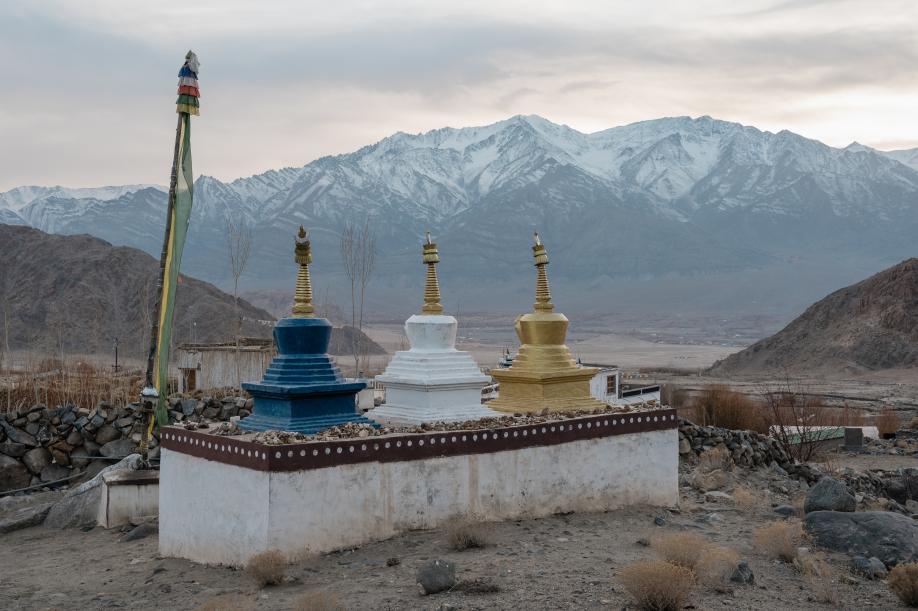

In the mountain valley, there is the small village of Nang. Buddhist chortens have been erected with the Hemi Mountain Range in the background. Nang is a very typical village in the Indian Union Territory of Ladakh. Approximately at 11,500 ft altitude, the small community of about 50 households relies on barley, fruit crops, and minimal livestock for their necessities.
Melting Glaciers, Changing Lives
Eleanor Moseman | Ladakh, India
Photographer: Eleanor Moseman
Exhibit Title: Melting Glaciers, Changing Lives
Location: Ladakh, India
Preliminary photos for a long-term project.
Ladakh, located on the western end of the Himalayas, boasts four major mountain ranges: the Great Himalayan, Zanskar, Ladakh, and the Karakoram. This region is called the Hindu Kush Himalayan region.
The HKH (Hindu Kush Himalayan region) faces the adverse effects of climate change, including rising temperatures, unpredictable weather patterns, a shortage of water supply, and declining livestock quality.
This story is about Nang, a typical Ladakhi village nestled in the mountains of Ladakh, and its survival as the surrounding glaciers are melting twice as fast as the rest of the world. Last winter, an engineering team implemented and tested a new ice field above the village to conserve water for their crop season. Still, this experiment wasn't successful as there wasn't enough water to form ice.
These images show the daily life and work of a Ladakhi family that has lived in Nang for generations during the early winter. Collecting fresh vegetables in the sub-zero temperatures of January to celebrate Losar, the Himalayan people's New Year.
After traveling and photographing the Tibetan regions for over a decade and watching the effects of climate change. Last winter, I made my first trip to Ladakh. My original focus was exploring the experimentation and implementation of ice stupas and ice fields for water conservation. However, during my visit, I came across a story highlighting the survival and resilience of a Ladakhi village in the face of climate change. Unfortunately for Nang, implementing the ice field in the village's upper mountains proved unsuccessful because more water was needed.
I was fortunate enough to befriend a household of three generations, including parents my age and a grandmother born in the village who is the same age as my mother. Over time, we grew very close, like family, and I was grateful for the opportunity to immerse myself in their daily lives and traditions. From sharing meals and stories to participating in local festivals and celebrations, I gained a deep appreciation for the rich history of Ladakh and the hard work to conserve their environment and way of life. Ladakhis truly love their lands and understand the importance of preserving their home for future generations and the world.
This story highlights the challenges and innovative ways that Himalayan communities are adapting to climate change. I will return to Ladakh this summer to continue this story and focus on the summer harvesting and tourism season. Life is very different in summer, as it's more labor intensive while facing the effects of tourism. I will also travel with the conservation engineers to another town to document village life, where their ice field implementation proved successful a few months ago.
www.eleanormoseman.com
1 (937) 829 5103
eleanor.moseman@gmail.com
IG: "eleanormoseman"
Make Comment/View Comments